Nothing can be more frustrating when it comes to a great lawn than unexplained lawn problems. If it’s bad enough, you might even be wondering if your lawn can be saved.
In an effort to try and get you helpful information and to have some sense of whether your lawn problems can be remedied, we’ve put together this guide full of information on lawn problems and solutions.
1. Thin and Bare Lawn Areas
If it’s thinned out and bare areas around your lawn that are your biggest gripe, there are a variety of possible reasons to consider. Let’s look at some of the potential culprits of this common lawn problem as well as some various solutions for fixing lawn patches.
- Compacted Soil: It could be that your soil is compacted (which is common with Lehigh Valley clay soils), making it a hostile environment for healthy grass growth. If this is the case, lawn aeration can help relieve soil compaction and promote overall healthier growth. Overseeding after aeration can also help to fill in those bare spots.
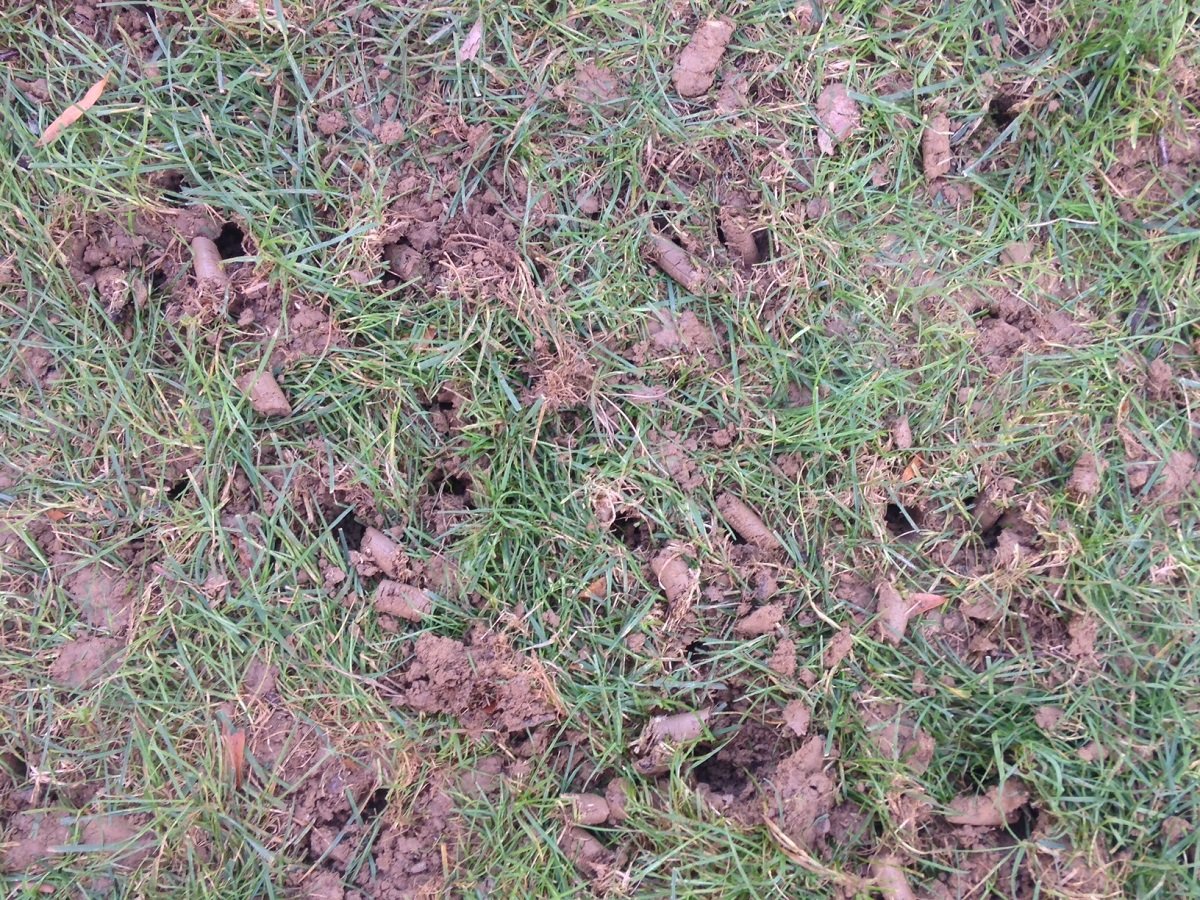
- Soil pH: The problem could also be an issue with pH balance. In order to grow healthy cool-season turfgrasses such as Kentucky Bluegrass, Perennial Ryegrass, and Turf Type Tall Fescue in the Lehigh Valley, it’s important to make sure your soil is between 6.5 and 7.0 on the pH scale. Because our local soil has a tendency to be about 10x as acidic, lawn care companies often perform lawn limestone treatments in the fall to help raise low soil pH closer to that neutral zone.
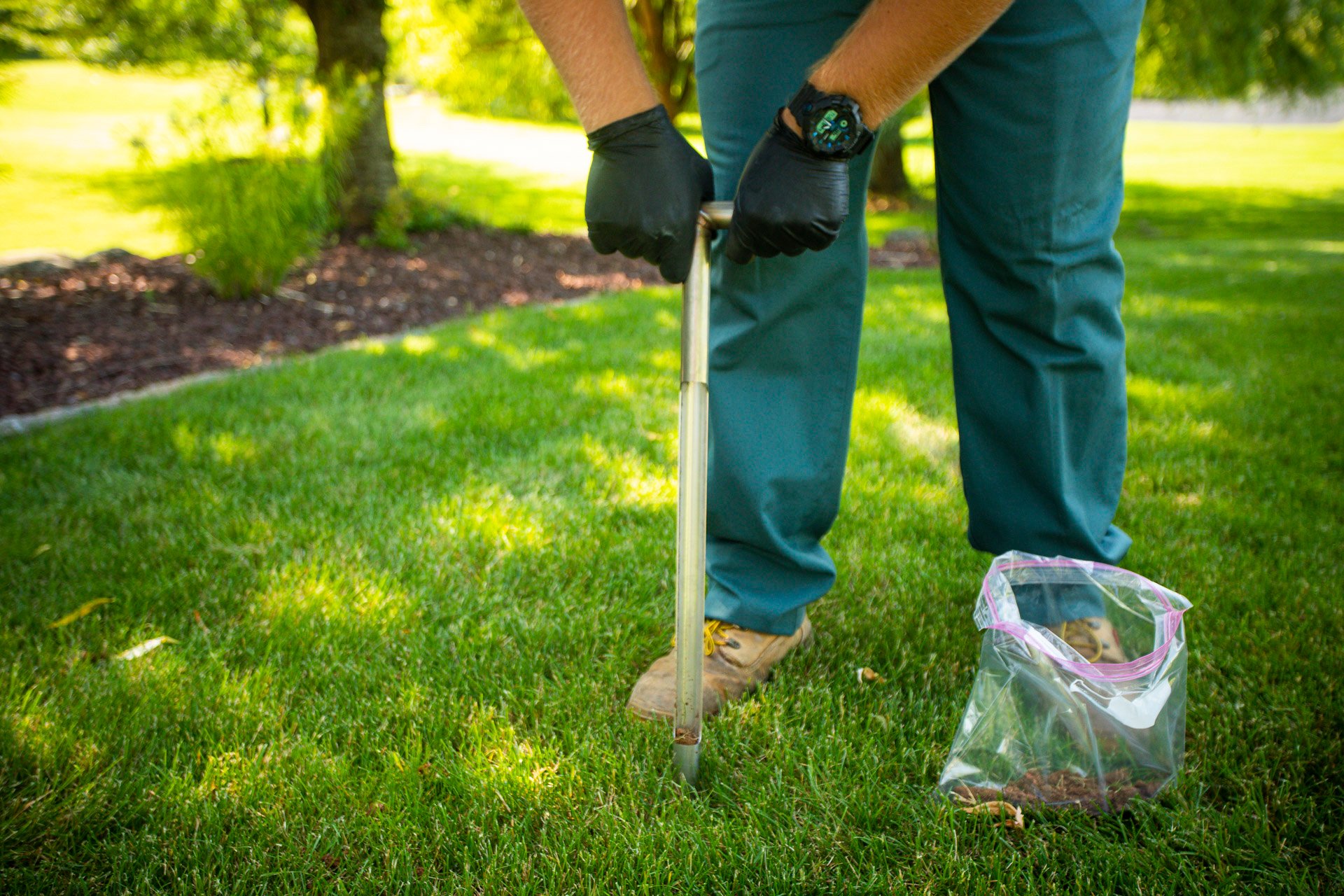
- Lawn Diseases and Insects: Lawn diseases and various lawn insects can also lead to bare patches. If you have a disease or a pest actively destroying your lawn, it’s going to do harm. Fortunately, there are both preventative and curative treatments for many lawn diseases and insect problems.
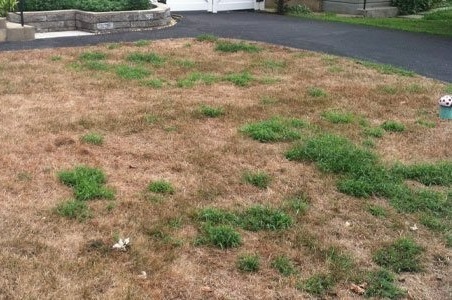
- Too Much Shade: If you have thin grass or bare patches, and you live on a shaded property, it could just be that your grass is not getting enough sun. Sometimes, growing grass in shade can be achieved with regular tree pruning. But oftentimes, you may need to come up with a solution in your shaded spots such as extending your tree mulch rings or even adding plant beds where shade-loving plants could grow.
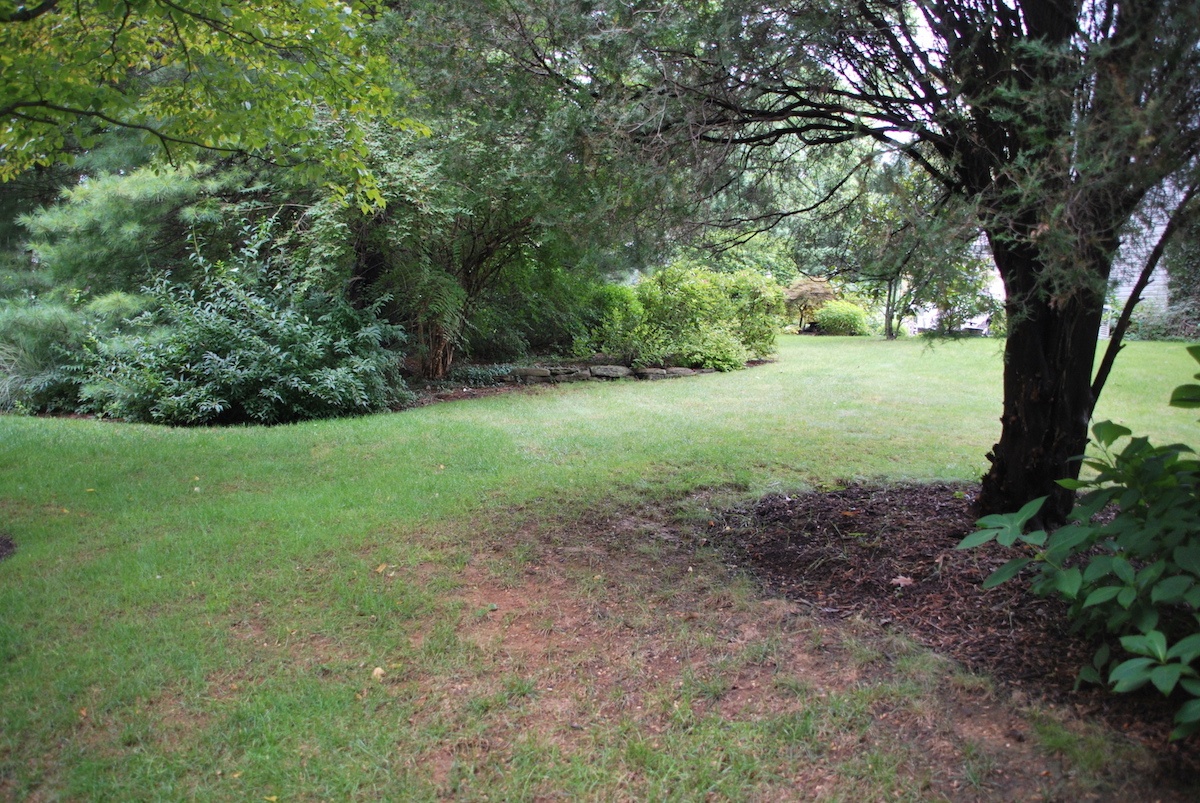
2. Lawn Weeds
Weeds are another common lawn problem that can really detract from the overall look and performance of your turf.
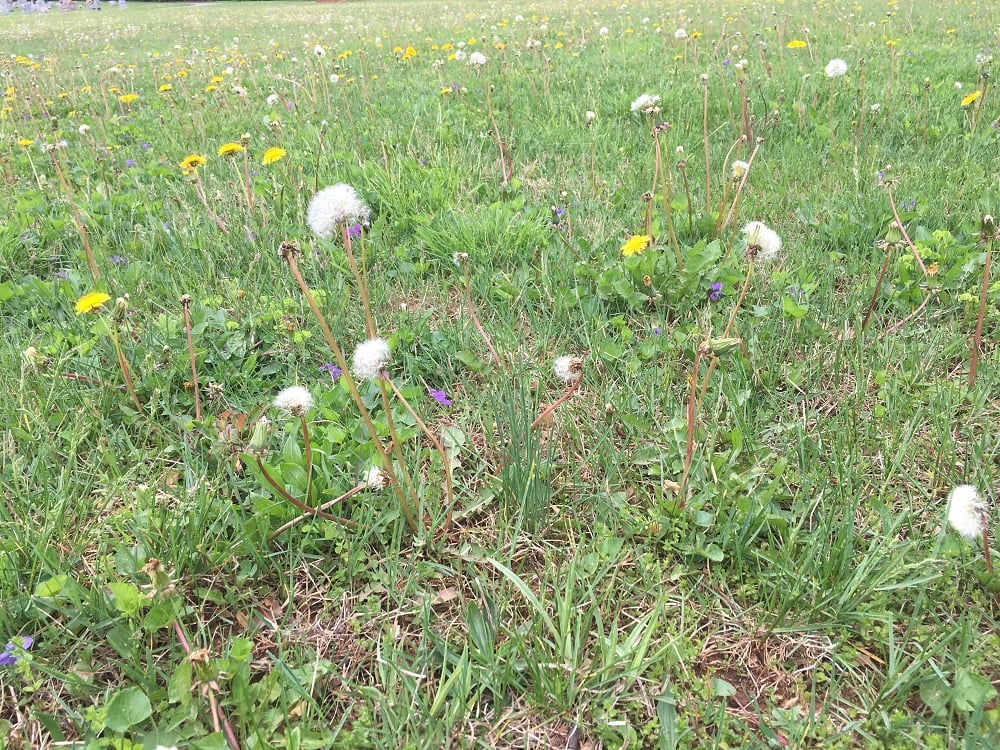
First of all, it’s important to mention that everyone’s opinion of what constitutes a “problematic lawn” tends to vary. It’s one of those things that is highly subjective.
What one homeowner might call a lawn that is “covered in weeds” might be quite different than another. In this article, we call the “absolutely terrible lawn,” one that has more bare spots and weeds than it does healthy grass. But even that type of lawn is ultimately repairable with lawn renovation services.
The truth is, very rarely is a lawn beyond the point of fixability, even if it is completely plagued with weeds. You’ll just need to be patient that it could take several seasons of care to get it to where you want it to be.
This will include customized treatments to address all seasons of lawn weeds. Multiple rounds of aeration and overseeding will also play a huge role in getting your lawn back on track to great health.
2. Strange Grass or Clumps
Sometimes we get questions about lawn problems related to “strange grass” or “clumps of grass” growing in the yard. Homeowners are unsure of whether these are weeds or something else.
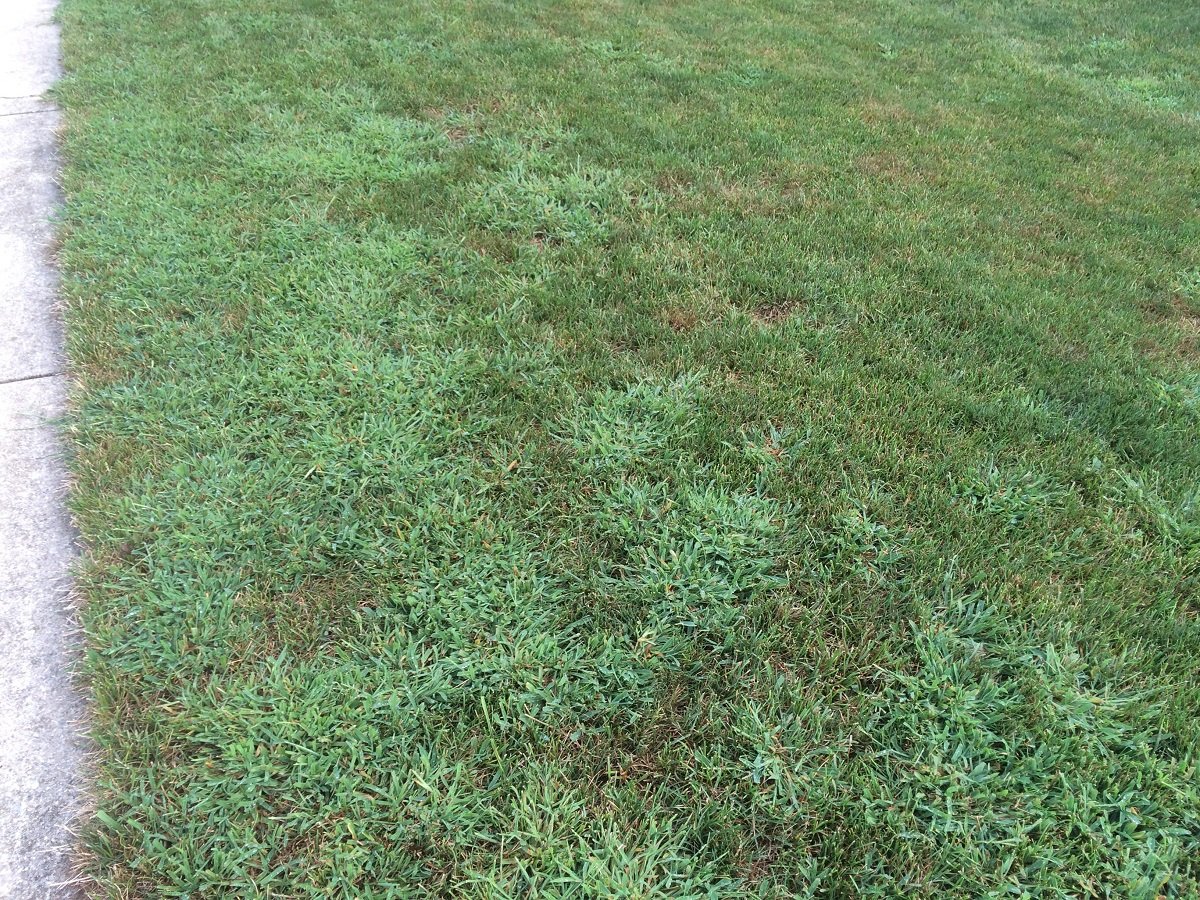
These are usually grassy weeds like nutsedge, crabgrass, or even unwanted varieties that you weren’t intentionally growing in your lawn. Anything, even grass, should be classified as a “weed” if it was unwanted.
Some of the most common types of unwanted grasses include the following.
- Orchardgrass
- Rough Bluegrass
- Bentgrass
- Zoysiagrass
- Bermudagrass
- Kentucky 31 Tall Fescue
- Crabgrass
- Nutsedge
If you are dealing with grass growing in clumps, then it’s incredibly important that you properly identify exactly what weed it is you’re dealing with. Even some of the 8 grassy weeds mentioned above can be commonly mistaken for one another. By misidentifying the weed you’re dealing with, you won’t know the best approach for control.
Having your lawn inspected by a professional will be the key to finding the correct solution. It’s important to find an honest and trustworthy pro that will steer you in the right direction. The hard truth is that many of these grassy weeds are uncontrollable. You don’t want to end up wasting your money on weed treatments that aren’t going to work because your lawn care professional was not upfront with you about this fact.
4. Lawn Damage
Lawn damage such as from a chemical spill or being trampled or torn up due to a construction project is another common homeowner lawn problem. A lot of times homeowners assume that their lawn is beyond repair.
Again, we will stress that even the worst lawns can be repaired, it’s just a matter of how long it’s going to take. If your yard is truly in awful shape, it might mean starting from scratch. Sometimes, that’s more than Joshua Tree can handle and if that’s the case, we’ll be honest with you. If you require sodding or some other form of extensive lawn renovation, you can count on us to tell you that.
But most of the time, aeration and overseeding can work some pretty transformative magic.
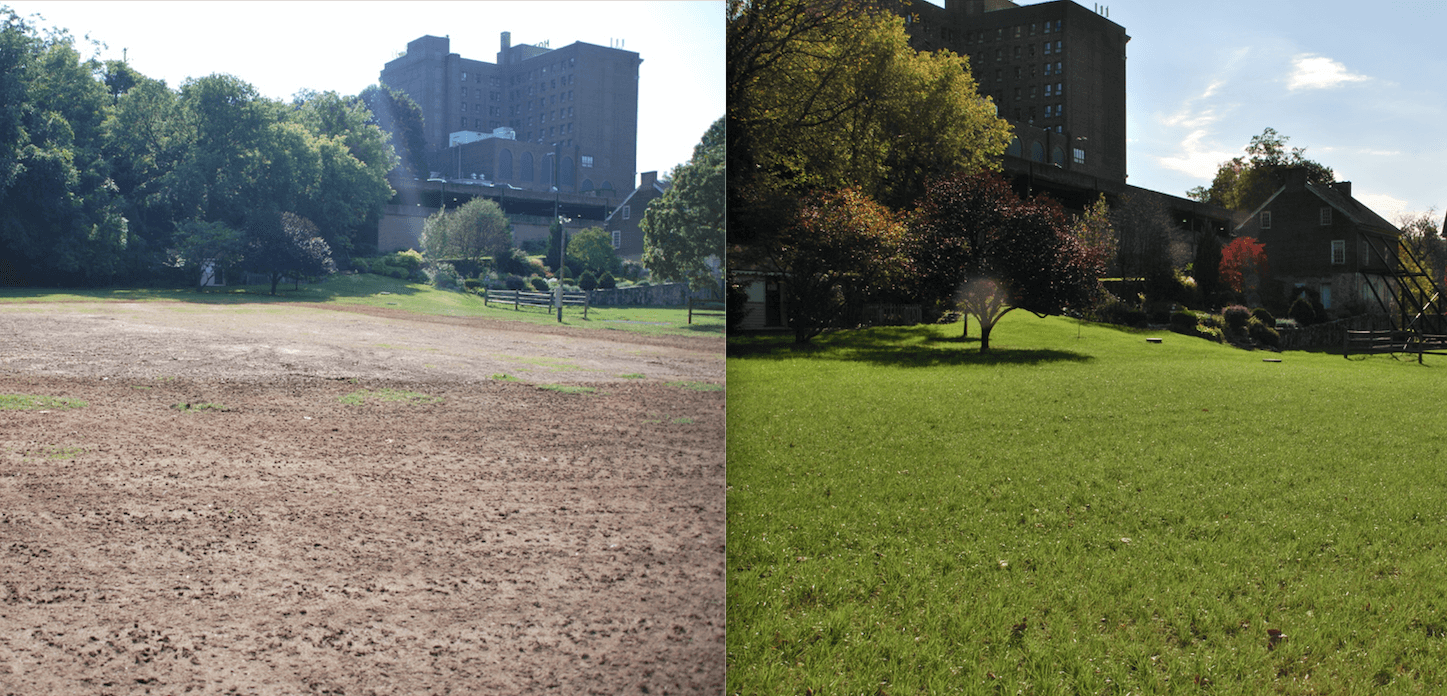
Aeration and overseeding took this lawn from Musikfest (which had essentially no grass after being so trampled) and restored it. If it can do that for a commercial lot, it’s most likely going to be able to restore your lawn. You just have to be willing to give it time.
5. Lawn Bumps
A bumpy and uneven lawn is another major frustration. There are multiple reasons why your lawn may be bumpy and choosing the best solution will mean determining the root cause of the problem.
Some potential reasons for a bumpy lawn include the following.
Freezing and Thawing: A thin lawn that freezes and thaws (often multiple times in the Lehigh Valley area) can cause the soil to lift and heave, ultimately becoming bumpy.
Earthworms and Nightcrawlers: Earthworms and nightcrawlers can cause a lawn to be bumpy because they create small clumps of dirt at the soil surface. These lumps are called “castings” and can leave the lawn quite bumpy.
Animals Digging: Animals digging through your lawn may be another culprit of the unwanted bumps. While raccoons will roll up a lawn in search of grubs and other larval insects, skunks are known to make small holes while digging for insects to eat.
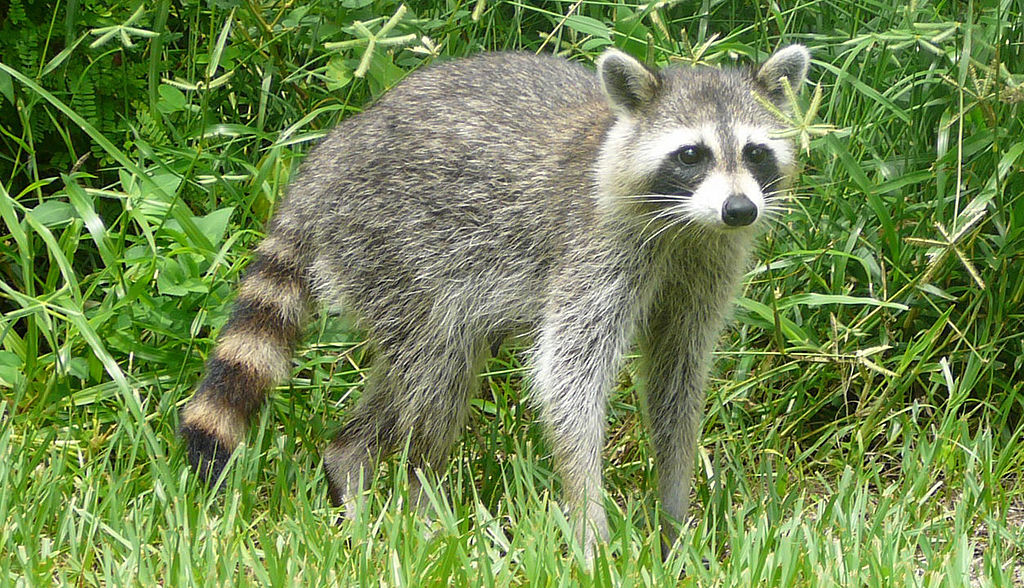
Improper Grading: A poorly graded yard is a more serious cause behind a bumpy yard and can lead to bigger problems if water is running toward your home instead of away from it.
Tree Roots: One or more trees on your property may have roots growing close to the surface. These roots may be causing your bumpy lawn problems.
Mower Ruts: Are you constantly mowing in the same groove over and over again? A bumpy lawn may be the result of mower ruts created by mowing the same pattern again and again.
Exactly how to address your bumpy lawn problem will come down to addressing the specific issue that caused it.
Sometimes thickening up your lawn can also help disguise some of its bumpiness. You also want to be careful not to mow your grass too short. Think about it this way—if you were to stick a marble under a welcome mat or under your mattress, where would you notice it most? The welcome mat, of course. That’s because the cushioning of the mattress makes that small bump less noticeable.
In the same sense, a lawn that has not been mowed too short and that has a layer of thick, plush grass will make those bumps much less noticeable. Thickness can also be achieved with lawn care for your Allentown, Bethlehem, or Easton, PA home. Lawn fertilization will help your grass to grow healthy and thick. Adding lawn aeration to your plan will help thicken it even more.
6. Lawn Discoloration
Another lawn problem that you might be experiencing is discoloration or anything that’s not the “dark green” that you desire. This could be a lawn that is pale or yellow or even a lawn that is brown.
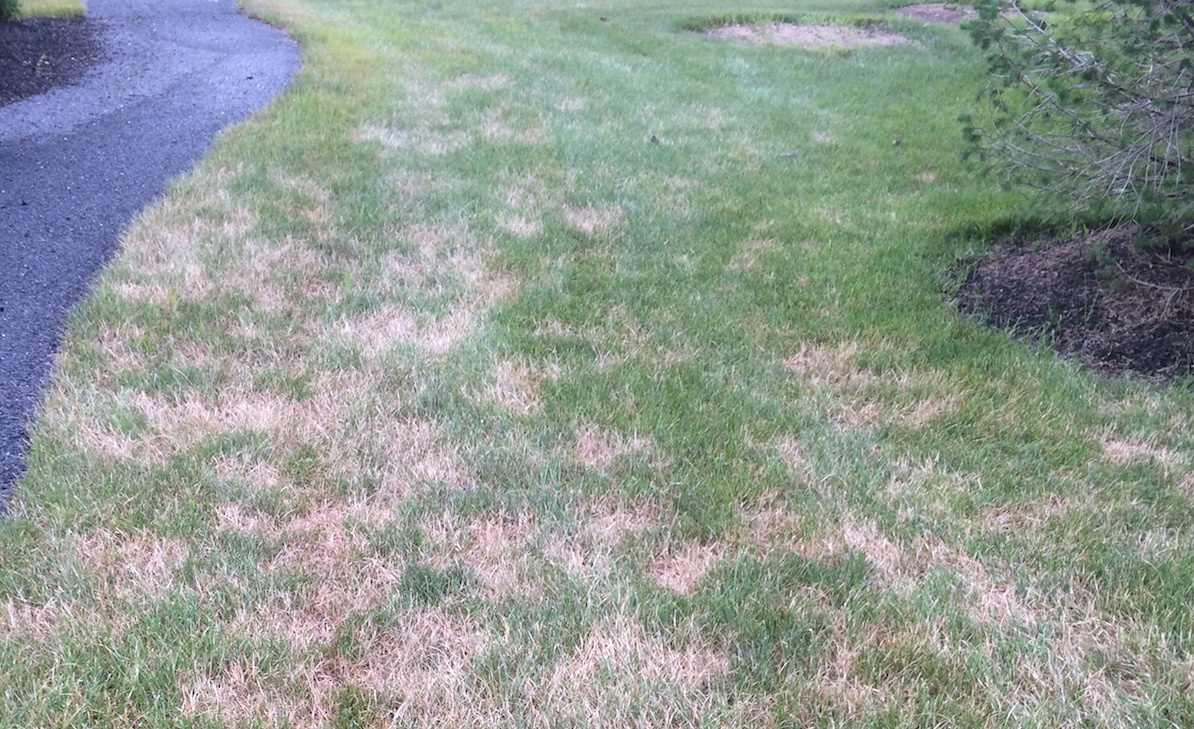
Again, there are going to be different culprits behind this problem. The most common ones include the following.
- Drought stress or lack of water
- Turf Disease
- Early stages of insect damage
- Improper mowing
- Nutrient deficiency
Addressing the problem with the proper solution will come down to understanding what you’re dealing with. While a lack of water can be easily remedied by adding an irrigation system or watering more regularly, an insect problem is going to require an application of a curative product.
It’s also important to note that some of the so-called “solutions” could make a misdiagnosed problem worse. For instance, if you think your lawn is yellowing because it needs water but it is actually experiencing a problem with lawn fungus, then watering it will actually spread that fungus and make it worse.
In the end, it all comes down to proper diagnosis by a professional. If you are concerned about your lawn’s color, the best course of action is to call a professional. After a thorough inspection, they can diagnose the problem and get you on the right path.
Solving Lawn Problems with a Professional
At Joshua Tree, we have helped many homeowners in the Allentown, Lansdale, and Collegeville, PA areas with all of these frustrations at some point or another. In fact, it’s quite common for homeowners to have more than one lawn problem at the same time. To get your lawn back on track, the proper diagnosis of one or more problems will be key.
If you find yourself asking “Can my lawn be saved?,” then we want to be available to help. After all, you ought to be able to get answers to your questions so that you can get your lawn back on track to looking its best.
If you’d like to find out more about how our lawn care service, which includes three options to fit your budget, can give you the results you desire, contact us for a free consultation or give us a call at 610-365-2200 so we can answer your questions.
Image sources: raccoon




